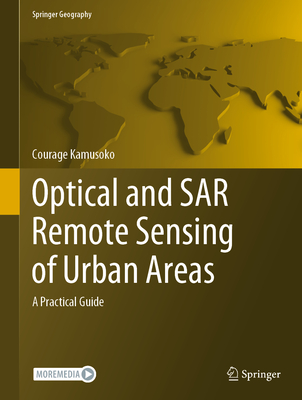Compressive Sensing for Urban Radar
暫譯: 城市雷達的壓縮感知
Amin, Moeness
- 出版商: CRC
- 出版日期: 2017-03-29
- 售價: $3,850
- 貴賓價: 9.5 折 $3,658
- 語言: 英文
- 頁數: 508
- 裝訂: Quality Paper - also called trade paper
- ISBN: 1138073407
- ISBN-13: 9781138073401
海外代購書籍(需單獨結帳)
相關主題
商品描述
With the emergence of compressive sensing and sparse signal reconstruction, approaches to urban radar have shifted toward relaxed constraints on signal sampling schemes in time and space, and to effectively address logistic difficulties in data acquisition. Traditionally, these challenges have hindered high resolution imaging by restricting both bandwidth and aperture, and by imposing uniformity and bounds on sampling rates.
Compressive Sensing for Urban Radar is the first book to focus on a hybrid of two key areas: compressive sensing and urban sensing. It explains how reliable imaging, tracking, and localization of indoor targets can be achieved using compressed observations that amount to a tiny percentage of the entire data volume. Capturing the latest and most important advances in the field, this state-of-the-art text:
- Covers both ground-based and airborne synthetic aperture radar (SAR) and uses different signal waveforms
- Demonstrates successful applications of compressive sensing for target detection and revealing building interiors
- Describes problems facing urban radar and highlights sparse reconstruction techniques applicable to urban environments
- Deals with both stationary and moving indoor targets in the presence of wall clutter and multipath exploitation
- Provides numerous supporting examples using real data and computational electromagnetic modeling
Featuring 13 chapters written by leading researchers and experts, Compressive Sensing for Urban Radar is a useful and authoritative reference for radar engineers and defense contractors, as well as a seminal work for graduate students and academia.
商品描述(中文翻譯)
隨著壓縮感知(compressive sensing)和稀疏信號重建(sparse signal reconstruction)的出現,城市雷達的研究方法已轉向對時間和空間信號採樣方案的放寬限制,並有效解決數據獲取中的後勤困難。傳統上,這些挑戰通過限制帶寬和孔徑,以及對採樣率施加均勻性和界限,阻礙了高解析度成像。
《城市雷達的壓縮感知》(Compressive Sensing for Urban Radar)是第一本專注於兩個關鍵領域的混合書籍:壓縮感知和城市感知。它解釋了如何利用僅佔整體數據量極小百分比的壓縮觀測來實現室內目標的可靠成像、跟踪和定位。這本最前沿的書籍捕捉了該領域最新和最重要的進展:
- 涵蓋地面和空中合成孔徑雷達(synthetic aperture radar, SAR),並使用不同的信號波形
- 展示壓縮感知在目標檢測和揭示建築內部方面的成功應用
- 描述城市雷達面臨的問題,並強調適用於城市環境的稀疏重建技術
- 處理在牆面雜訊和多徑利用下的靜態和移動室內目標
- 提供使用真實數據和計算電磁建模的眾多支持範例
本書由領先的研究人員和專家撰寫,共有13章,《城市雷達的壓縮感知》 是雷達工程師和國防承包商的有用且權威的參考資料,也是研究生和學術界的重要著作。
作者簡介
Dr. Moeness G. Amin has been a faculty member of the Department of Electrical and Computer Engineering at Villanova University, Pennsylvania, USA for nearly 30 years. In 2002, he became the director of the Center for Advanced Communications, College of Engineering. Currently he is the chair of the Electrical Cluster of the Franklin Institute Committee on Science and the Arts, as well as an IEEE, SPIE, and IET fellow. The recipient of many prestigious awards, he has conducted extensive research in radar signal processing, authored over 650 journal and conference papers, and served as an editor for numerous publications.
作者簡介(中文翻譯)
莫恩斯·G·阿敏博士在美國賓夕法尼亞州的維拉諾瓦大學電機與計算機工程系擔任教職近30年。2002年,他成為工程學院先進通訊中心的主任。目前,他是富蘭克林學會科學與藝術委員會電氣集群的主席,同時也是IEEE、SPIE和IET的會士。他獲得了許多著名獎項,並在雷達信號處理方面進行了廣泛的研究,發表了超過650篇期刊和會議論文,並擔任多本出版物的編輯。































